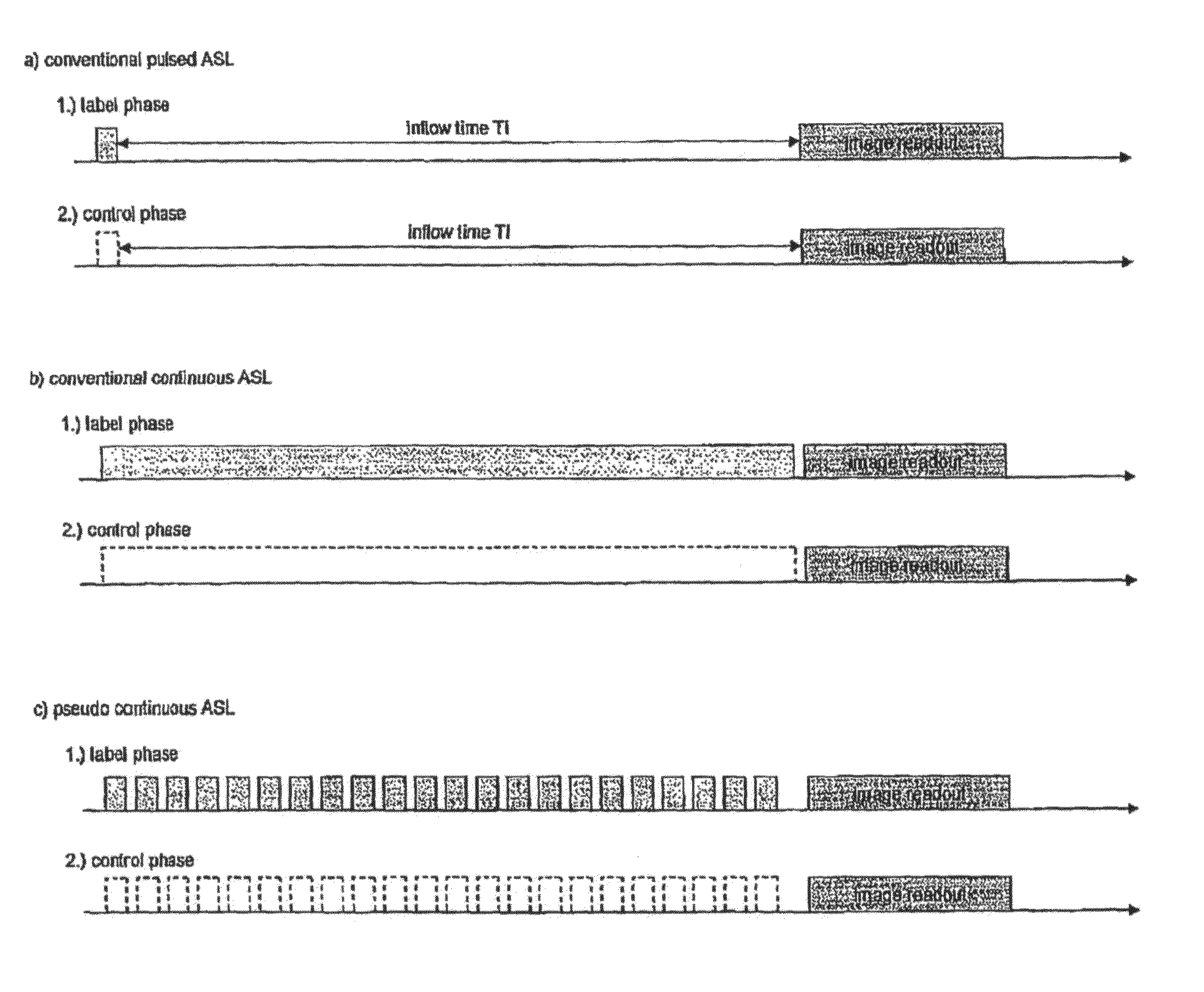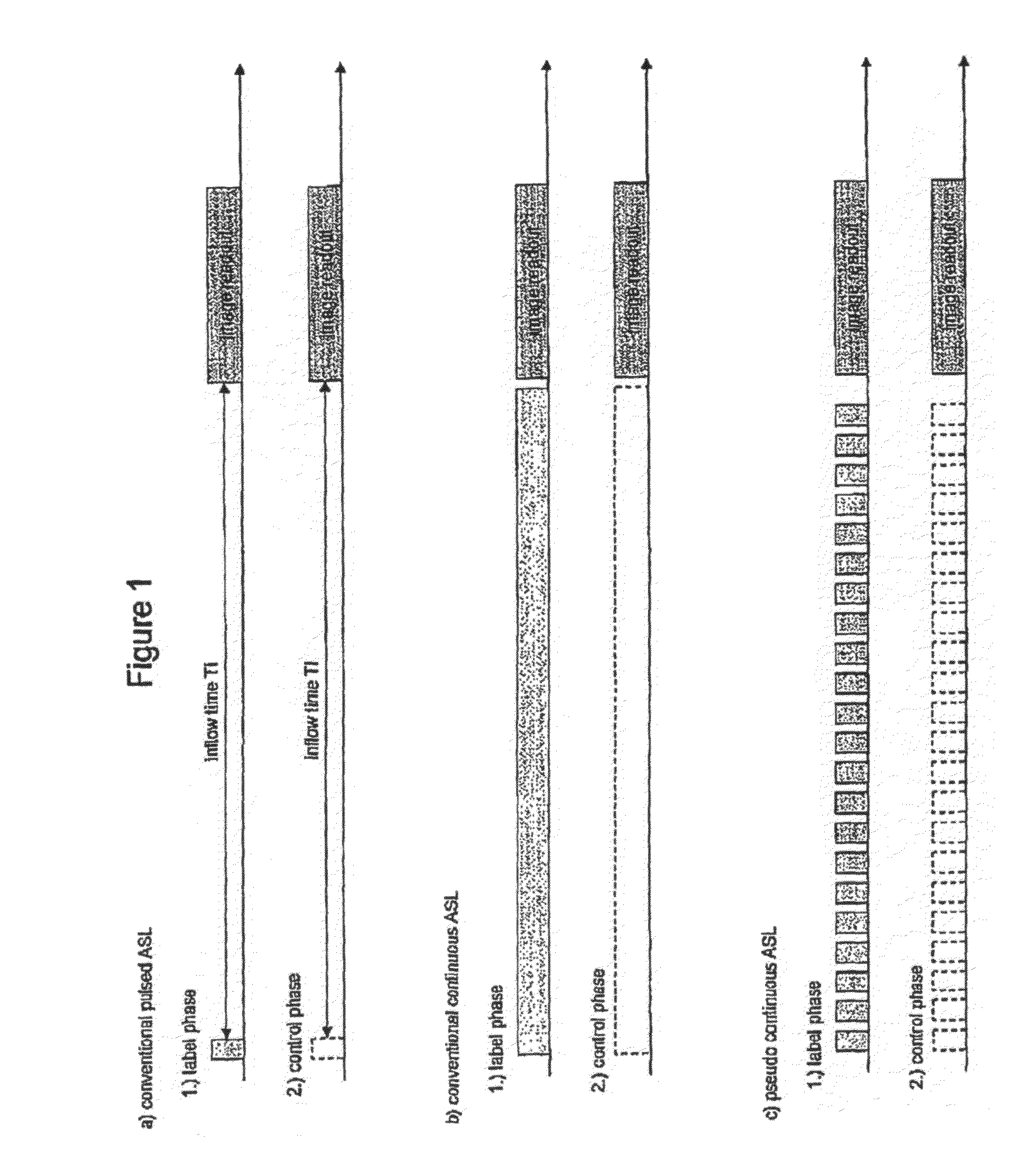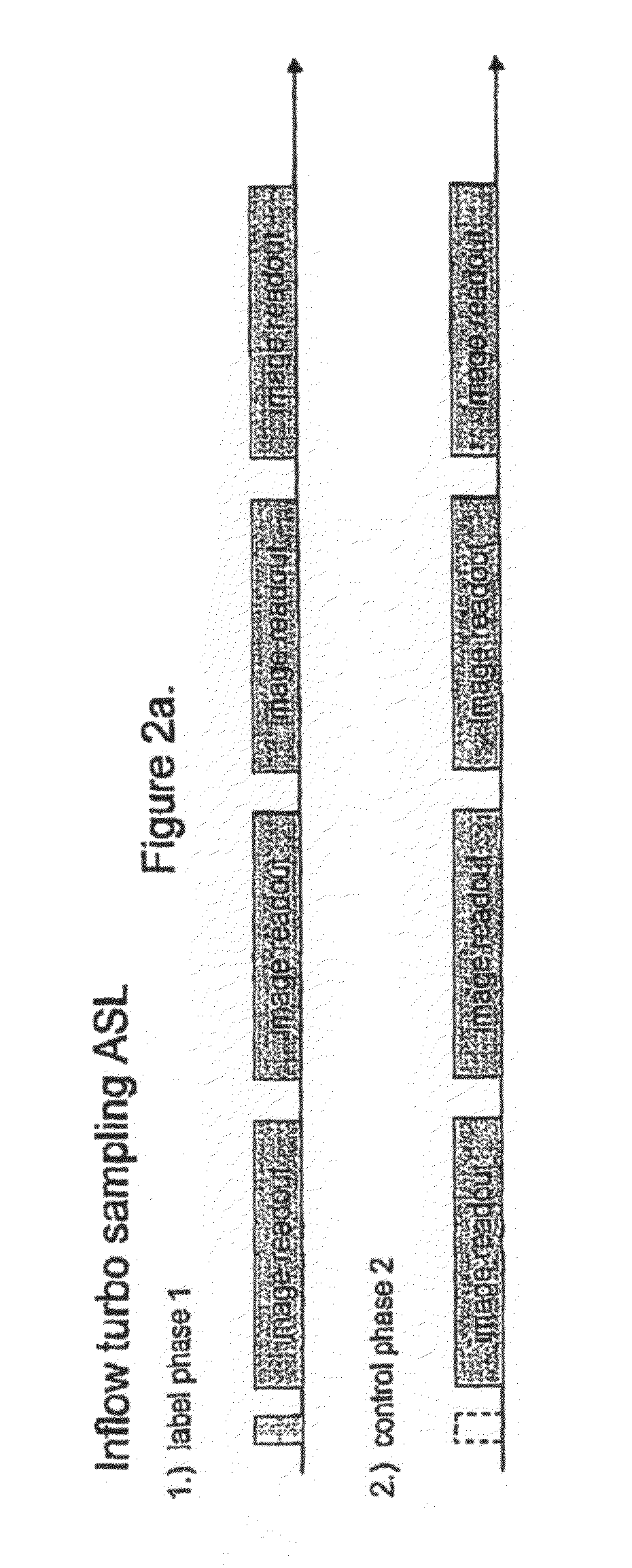Extreme speed-up of acquisition of perfusion time series by cycled arterial spin labeling MRI
- Summary
- Abstract
- Description
- Claims
- Application Information
AI Technical Summary
Benefits of technology
Problems solved by technology
Method used
Image
Examples
Embodiment Construction
[0014]The goal is to acquire data sets which comprise signal of multiple labeled blood boluses and to extract the signal of each single bolus. Since these boluses were labeled at different times before image readout, an ASL time series can be extracted. The differentiation requires an encoding of each bolus. As stated above, two phases, a control and label phase, are used to form a bolus of labeled blood. Using different combinations of control and label phase for each time step makes it possible to separate the signal of different boluses. In the following, the complete set of the combinations used to separate all boluses will be called a tagging cycle while a single combination will be dubbed a cycle step. The length of the tagging cycle is N.
[0015]The encoding problem can then be described by a matrix equation:
I=E·M, (Eq.1)
where M=(M(TI1), M(TI2), . . . , M(TIN))T is the fresh longitudinal magnetization of blood spins at the tagging side at times TI1 to TIN. The encoding matrix ...
PUM
 Login to View More
Login to View More Abstract
Description
Claims
Application Information
 Login to View More
Login to View More - R&D Engineer
- R&D Manager
- IP Professional
- Industry Leading Data Capabilities
- Powerful AI technology
- Patent DNA Extraction
Browse by: Latest US Patents, China's latest patents, Technical Efficacy Thesaurus, Application Domain, Technology Topic, Popular Technical Reports.
© 2024 PatSnap. All rights reserved.Legal|Privacy policy|Modern Slavery Act Transparency Statement|Sitemap|About US| Contact US: help@patsnap.com










